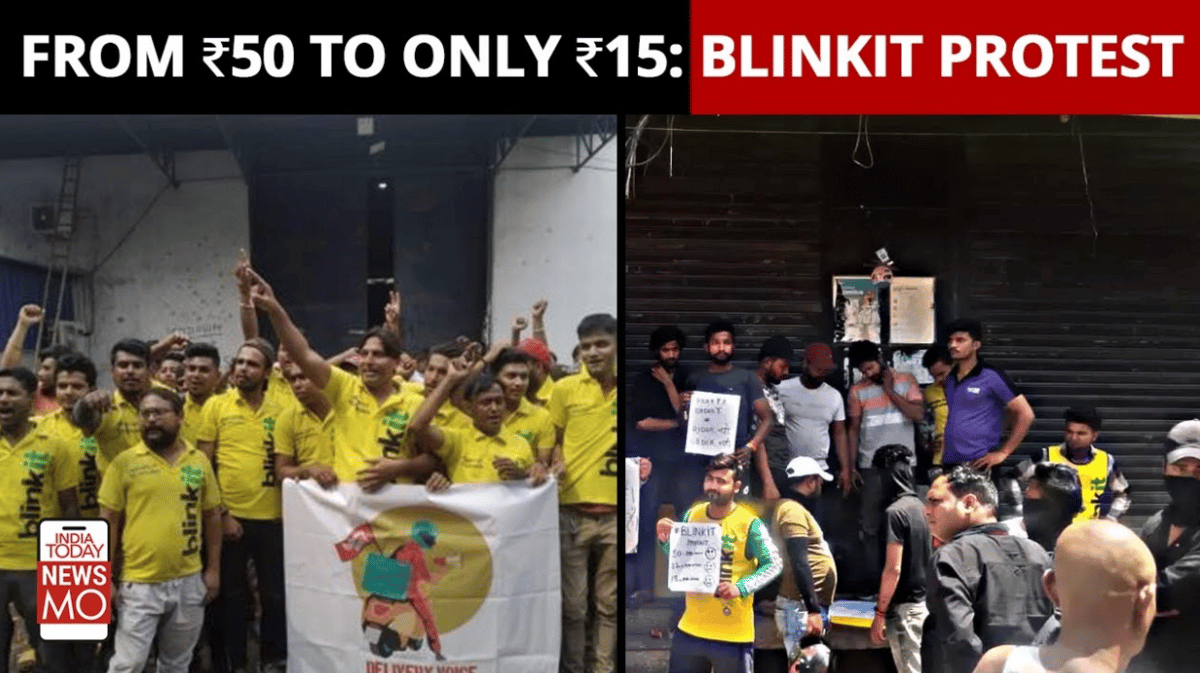- The FinOak
- Posts
- Coffee and investing? Say no more! ;)
Coffee and investing? Say no more! ;)

Welcome, FinOak fam! How are you doing? We bring you an electrifying edition, chock-full of gripping updates that will leave you on the edge of your seat. Brace yourselves as we take you through the riveting acquisition of Raymond by Godrej, and the protests of Blinkit workers. And, if that's not enough to pique your interest, we've also compiled an intriguing piece on the concept of coffee can investing. So, without further ado, let's dive in and explore these exciting topics!
Note: Please move this email to your primary inbox so that you don’t miss out on any update ;)
Column 1
Weekly Wrap Up
In This Edition:
1. GODREJ * RAYMOND - A Doubtful Deal?
2. ‘Blink’ and they’ll protest: The story behind the Blinkit workers protest
GODREJ * RAYMOND - A Doubtful Deal?

On last Friday, during the market hours, Raymond’s stock moved up by 6% while Godrej’s tanked by 4.5 %!
What dish was served hot on Thursday though?
On April 27, GCPL announced the acquisition of Raymond's consumer care business in an all-cash deal for Rs 2,825 crore. The FMCG business, along with the Park Avenue (FMCG category), KS, KamaSutra, and Premium trademarks will be acquired by May 10, through a slump sale.
Given that Raymond Consumer is a small business with subpar EBITDA earnings, analysts believe the acquisition to be a risky bet and expensive for the Godrej company.
The Street is doubtful that Raymond's deodorants and sexual health products would develop quickly enough for Godrej Consumer Products Limited (GCPL) to enhance market penetration. This explains the 4.5 percent decline in the share price of Godrej Consumer Products on 28th April.
Stock Price Tank Rationale-
•Why is there a need for the Park Avenue brand when GCPL’s own Cinthol brand is rather under-utilized at present?
•Also, Coupled with higher interest costs and initial investments required to integrate RCCL’s business, overall EPS would see a dilution of 4 percent/2 percent for FY24E / FY25E.
•While, under Raymond, the business had a reach of 650,000 outlets, GCPL’s 6.5 million (or 10 times of that). Retail reach would be crucial in scaling the brands in the near future.
•Deodorants are now becoming more and more of a commoditized category
•Fogg dominates the non-gas category
The ‘buy’ rating on the stock remains intact, largely on the back of its air freshener and home insecticides business. Godrej Consumers Indonesia business is also expected to turn around in FY 23-24.
Want to dive deeper into the Raymond-Godrej verse? Follow the link in Go Deeper
‘Blink’ and they’ll protest: The story behind the Blinkit workers protest

Background of BlinkIt, Zomato
As we all must know, thanks to the global pandemic, BlinkIt–also formerly known as Grofers–is an instant delivery service that delivers dairy, fruit and vegetables, personal care items, beverages etc., right at your footstep.
Thanks to all our midnight cravings, most of us also know about Zomato, which is an indian restaurant aggregator. However, not many of us are aware that Zomato is actually BlinkIt’s food delivery partner.
How did the deal take place?
Zomato bought BlinkIt in August 2022 for a sum of Rs 4,448 crores. They purchased BlinkIt with intent of foraying into quick commerce space that it had been looking at, for some time
Zomato got access to more than 400 ‘dark stores’ of BlinkIt; which are essentially warehouses that stock variety of products from third party distributors.
When an order is placed, the dark store staff packs and readies the order for it to be picked up by rider and delivered to customer location. BlinkIt, well positioned in this regard as its delivery radius per dark stores is less than 2 km.
Changes to the pay structure
Upon its acquisition, BlinkIt changed pay structure for its drivers, by reducing it from Rs 50 per order to Rs 25 per order (just after acquisition) and now to Rs 15 per order. That is, for about 12 hours of work, pay went down from Rs 1200 to Rs 600-700. Earlier, riders used to be paid a fee for driving in peak hours, however such a fee has now been removed, which is one of the main driving forces as to why BlinkIt faces a loss of Rs 280 crore on a revenue of Rs 300 crore!
Issues Faced by riders
The main issues currently faced by the riders are low base pay. Not to mention the algorithms that incentivise riders to travel for hundreds of kilometres a day in return for a disproportionately low cash return. This doesn’t help, considering the rising fuel costs.
Post-pandemic, there also is a job uncertainty, which is a gruesome problem, considering they get no social security benefits, due to the absence of a formal workers’ union.
Actual happening of the protest and its side-effects
Upon seeing differences in their pay, workers started forming WhatsApp groups for large scale organising and mobilisation. Coordinated groups of 1000+ members to launch protests at Blinkit dark stores and project sites. This has led to shutting down of more than 25% of its dark stores, especially in the Delhi NCR region.
App services was stopped and delivery was temporarily made unavailable. This led to blocking of worker’s ID cards; who were a part of the strike, and eventually leading from a low pay, to no pay at all!
Response: A Domino effect
In response to these strikes, the company shut down its dark stores in Delhi NCR region.
Workers who were associated with these stores are no longer employees of BlinkIt and are not listed as delivery partners anymore. BlinkIt has refused to go back to older structure, which has also caused for some workers to approach the Union Labour Ministry.
Column 2
Personal Finance
In This Edition:
What is "Coffee Can Investing"?
What is “Coffee Can Investing”?

Coffee can investing is a long-term investment strategy that involves buying and holding high-quality stocks for a significant period, usually more than a decade. The name "coffee can" refers to the practice of keeping physical stock certificates in a coffee can and forgetting about them for years. This strategy is based on the idea that over time, the best companies will continue to grow and generate returns, while weaker companies will eventually fall by the wayside.
The concept of coffee can investing has been around for a while, but it was popularized by Robert Kirby in his book, "The Coffee Can Portfolio." The strategy is straightforward and doesn't require much effort or active management, making it a popular choice among long-term investors.
Wondering how you can create a Coffee Can Investing Portfolio? Here are 5 Easy Steps to do the same!
Step 1: Select high-quality stocks
Choose stocks of high-quality companies that have a proven track record of generating consistent returns over the years. Look for companies with a competitive advantage, a strong brand, and a solid balance sheet.
Step 2: Diversify
Diversify your portfolio by investing in stocks across different sectors and industries. This reduces the risk of your portfolio being affected by a single industry's performance.
Step 3: Buy and Hold
Once you've selected your stocks, buy them and hold on to them for a long time. Resist the temptation to sell or trade frequently, as this can lead to unnecessary transaction costs and taxes.
Step 4: Rebalance
Periodically review your portfolio to ensure that it remains balanced and aligned with your investment objectives. Rebalance your portfolio by selling some of the stocks that have performed well and adding more stocks that are undervalued or have better growth potential.
Step 5: Be patient.
Patience is key when it comes to coffee can investing. This strategy requires a long-term perspective, and it may take several years before you see significant returns. However, the upside is that it's a low-risk approach that can lead to stupendous wealth over time.
To conclude, coffee can investing is a low-risk approach to investing that involves buying and holding high-quality stocks for a long time. By following these five easy steps, you can create a portfolio that can generate significant returns over the years. Remember to diversify, buy and hold, rebalance periodically, and be patient.
To read more about this, check out the book ‘Coffee Can Investing: The Low-Risk Road To Stupendous Wealth’ by Saurabh Mukherjee
This will be all for this week, see you next week :)
Team FinOak